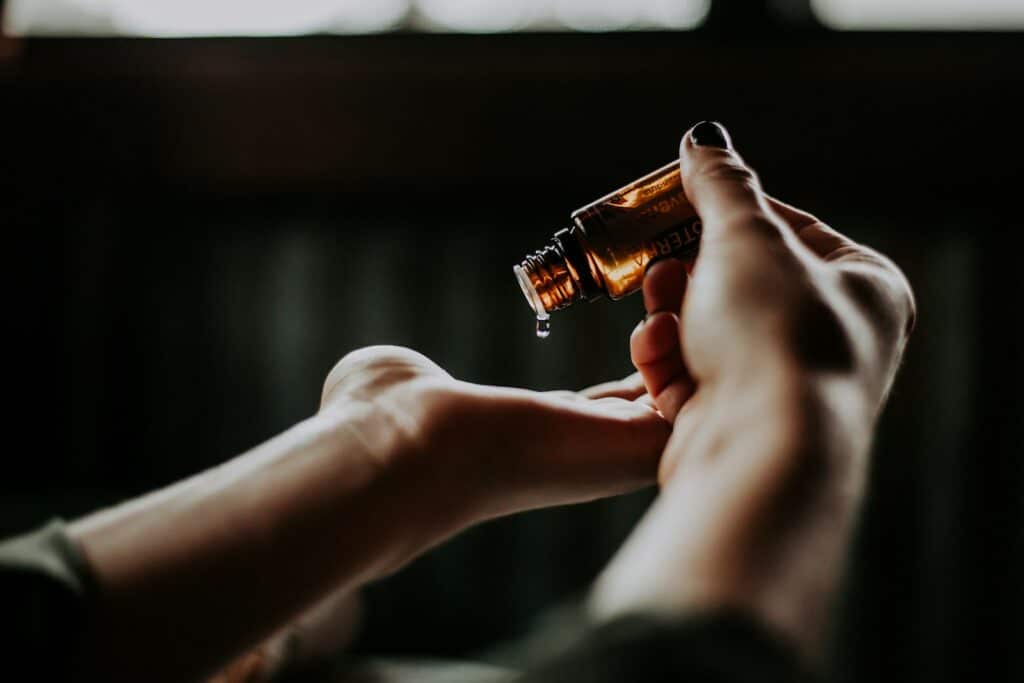The Short Answer
KLOW is an innovative 80mg peptide blend combining GHK-Cu (50mg), BPC-157 (10mg), TB-500 (10mg), and KPV (10mg) designed to target tissue repair, inflammation control, and cellular regeneration through multiple biological pathways simultaneously.
This sophisticated stack offers health optimization enthusiasts a comprehensive approach to recovery and healing, with each peptide bringing unique mechanisms—from GHK-Cu’s influence on 31.2% of human genes to BPC-157’s growth hormone upregulation.
While human clinical data remains limited and quality sourcing is critical for safety, community reports and preliminary research suggest significant benefits for joint recovery, gut health, and overall tissue repair when used in proper 30-day cycles.
KLOW Peptide: Understanding the Four-Peptide Synergy
Sometimes the future of biohacking isn’t about finding the next breakthrough compound—it’s about intelligently combining what already works.
Enter KLOW: a calculated blend of four well-researched peptides, each chosen for its unique contribution to healing and regeneration. This isn’t random stacking. It’s systematic biological optimization, targeting multiple repair pathways simultaneously.
The formulation reads like an all-star roster of regenerative medicine:
- GHK-Cu (50mg): The veteran player, with 40+ years of research. This copper-binding tripeptide naturally declines from 200 ng/ml at age 20 to 80 ng/ml by age 60
- BPC-157 (10mg): The healing specialist, a gastric pentadecapeptide with extensive research in tissue healing
- TB-500 (10mg): The migration enhancer, a synthetic fragment of thymosin beta-4
- KPV (10mg): The inflammation controller, an anti-inflammatory tripeptide derived from α-MSH
Think of it as a biological repair crew, with each member handling different aspects of cellular recovery.
Individual Peptide Benefits Summary
| Peptide | Primary Benefits | Secondary Benefits | Mechanism of Action | Research Stage |
|---|---|---|---|---|
| GHK-Cu | • Tissue regeneration • Wound healing • Collagen production | • Cognitive support • Anti-cancer properties • Hair/skin improvement | Modulates 31.2% of human genes | 40+ years research, extensive studies |
| BPC-157 | • Gut healing • Tendon/ligament repair • Joint recovery | • Neuroprotection • Mood support • Bone healing | Growth hormone receptor upregulation, VEGF stimulation | Phase I clinical trials completed |
| TB-500 | • Cell migration • Muscle repair • Flexibility | • Cardiovascular support • Anti-microbial effects • Hair growth | Actin regulation, angiogenesis promotion | Preclinical studies |
| KPV | • Anti-inflammatory • Gut protection • IBD support | • Respiratory health • Skin conditions • Immune modulation | NFκB pathway inhibition | Animal studies, limited human data |
The Science Behind Each Component: Why These Four?
GHK-Cu: The Genetic Conductor
Here’s a statistic that stops self-scientists in their tracks: GHK-Cu can influence expression of 31.2% of human genes. We’re not talking about minor tweaks—this peptide conducts a genetic orchestra.
Four decades of research have documented remarkable effects. Tissue regeneration accelerates. Collagen production increases. Nerve growth factors surge. It’s even one of only two substances found effective in modulating genes overexpressed in metastatic cancer.
The safety profile? Exceptional. Toxic effects only occur at doses around 22,500mg—literally thousands of times higher than therapeutic doses. You’d need to consume fistfuls of the stuff to approach danger.
BPC-157: The Clinical Pioneer
BPC-157 has something most peptides don’t: completed Phase I clinical trials. Real human safety data. That’s huge for health optimization enthusiasts who prefer evidence over anecdotes.
The mechanisms are fascinating. Seven-fold increases in growth hormone receptor expression in tendon fibroblasts. Enhanced VEGF signaling for new blood vessel formation. Nitric oxide regulation for inflammation control.
Human studies remain limited but promising. A pilot study in women with interstitial cystitis found 10 of 12 patients achieved complete symptom resolution. The remaining two? They still saw 80% improvement. Those aren’t placebo-level results.
TB-500: The Cellular Traffic Controller
TB-500 contains the actin-binding sequence LKKTETQ—seven amino acids that orchestrate cellular movement. When tissues need repair, cells must migrate to damage sites. TB-500 makes that happen more efficiently.
But it’s not just about movement. The peptide promotes angiogenesis through VEGF upregulation. Creates anti-microbial effects that limit infection risk. Enhances cardiac repair mechanisms. It’s like upgrading your body’s emergency response team.
KPV: The Nuclear Negotiator
KPV works at the deepest level of cellular signaling. It translocates directly to the cell nucleus and blocks NFκB—the master regulator of inflammation.
Effective at nanomolar concentrations. Let that sink in. We’re talking about biological activity at one-billionth of a gram per liter. The potency is extraordinary.
Research shows significant improvements in murine colitis models and suppression of inflammatory signaling in bronchial epithelial cells. For anyone dealing with inflammatory conditions, this mechanism matters.
Real-World Results: What the Community Reports
Laboratory research is essential, but what happens when real people use KLOW? Let’s examine community experiences with appropriate skepticism.
Recovery and Performance Enhancement
The biohacking community on Reddit provides consistent reports:
“My shoulder pain has decreased significantly, and my knee feels rejuvenated.” This isn’t uncommon. Joint issues seem particularly responsive to the KLOW combination.
Users combining peptides with growth hormone secretagogues like CJC/Ipamorelin report “remarkable” sleep improvements. The synergy makes sense—better sleep means better recovery.
Unexpected digestive benefits frequently appear as “pleasant surprises.” Given BPC-157’s gut-healing properties and KPV’s anti-inflammatory effects, this shouldn’t be surprising.
Medical Professional Perspectives
Interesting development: healthcare providers on professional forums report personal use with “quite impressive” results for joint discomfort. They remain cautious about recommending injectable options to patients—understandable given regulatory constraints—but personal experimentation is happening.
The Individual Variability Factor
Here’s crucial context: response varies dramatically. Some athletes report complete pain resolution within 2-3 weeks. Others experience nothing despite perfect protocols. This isn’t unusual in peptide therapy—individual biochemistry matters enormously.
Safety Profile and Side Effects
| Category | Common (>10%) | Occasional (1-10%) | Rare (<1%) | Theoretical Concerns |
|---|---|---|---|---|
| Mild Effects | • Injection site irritation • Initial fatigue (1-3 days) | • Mild headache • Light-headedness • Transient nausea | • Flushing • Mild anxiety | • Long-term receptor changes |
| Moderate Effects | None reported | • Temporary lethargy • Appetite changes | • Vivid dreams • Mood swings | • Unregulated angiogenesis |
| Severe Effects | None documented | None documented | • Allergic reaction (very rare) | • Unknown hormonal interactions |
| Safety Data | Well-tolerated in studies | No organ toxicity found | No cardiac/liver/kidney damage at high doses | Limited human long-term data |
| Toxic Dose | GHK-Cu: 22,500mg+ | Not established | Not established | Not established |
Understanding the Risk Profile
Most users tolerate KLOW components remarkably well. Mild headaches, light-headedness, and transient nausea occasionally occur—particularly with oral administration. Initial fatigue sometimes appears but typically resolves within days.
The absence of documented severe effects is noteworthy. No organ toxicity. No cardiac issues. No liver or kidney damage even at high doses in animal studies.
But let’s address the elephant in the room: BPC-157 is prohibited by WADA for competitive athletes and lacks FDA approval for human use. If you compete in tested sports, KLOW is off-limits.
Cancer Considerations
This deserves special attention. These peptides promote angiogenesis—new blood vessel formation. Theoretically, this could feed tumor growth. Anyone with cancer history should avoid these compounds or consult an oncologist first. This isn’t fear-mongering; it’s responsible risk management.
Possible Drug Interactions of KLOW Blend
| Condition/Drug | Risk Level | Specific Concern | Recommendation | Alternative Approach |
|---|---|---|---|---|
| Cancer History | HIGH | Angiogenesis may promote tumor growth | Avoid completely | Consult oncologist first |
| Autoimmune Disease | MODERATE | May alter immune response | Use with caution | Pre-treat with Thymosin Alpha-1 |
| Pregnancy/Nursing | UNKNOWN | No safety data available | Avoid | Wait until after nursing |
| NSAIDs | MODERATE | Counteracts regenerative effects | Avoid concurrent use | Space by 4+ hours or avoid |
| Blood Thinners | LOW | Theoretical interaction | Monitor closely | Consult physician |
| Competitive Sports | PROHIBITED | WADA banned substance | Do not use | Use in off-season only |
| Under 18 | UNKNOWN | No pediatric studies | Not recommended | Wait until adulthood |
| Diabetes | LOW | May affect blood sugar | Monitor glucose | Adjust insulin as needed |
Quality Sourcing: The Make-or-Break Factor
Let’s be blunt: peptide quality can range from pharmaceutical-grade to complete garbage. Your results—and safety—depend entirely on source quality.
| Quality Indicator | ✅ Green Flags | 🚫 Red Flags | Testing Standard |
|---|---|---|---|
| Purity | ≥99% certified | <98% or uncertified | HPLC/MS analysis |
| Testing | Third-party labs (MZ Biolabs, Janoshik) | In-house only or none | Independent verification |
| LPS Status | Endotoxin-free certified | No mention of LPS | <5 EU/mg |
| Price Range | $150-300 for 80mg blend | Under $100 or over $500 | Market appropriate |
| Documentation | COA provided for each batch | Generic or missing COA | Batch-specific |
Non-Negotiable Requirements
Third-party testing: Certificates showing ≥99% purity via HPLC/MS. Accept nothing less.
LPS removal: Bacterial endotoxins cause immune reactions. Certified endotoxin-free status is essential.
Batch-specific COAs: Generic certificates mean nothing. Each batch needs independent verification.
Appropriate pricing: If it’s too cheap, it’s probably fake. If it’s extremely expensive, you’re being gouged.
Red Flags That Should Send You Running
- Vendors making medical claims (illegal and indicates poor ethics)
- Pre-mixed solutions (stability issues)
- No available testing certificates
- Prices under $100 for 80mg blend (economically impossible for quality product)
- Claims of “pharmaceutical grade” without documentation
Dosing Protocols: The Practical Application
Standard KLOW Protocol
Based on research and community consensus:
- Reconstitution: Add 3mL bacteriostatic water to 80mg vial
- Daily dose: 0.1mL (10 units) subcutaneous injection
- Cycle length: 30 consecutive days
- Rest period: Minimum 15 days between cycles
This isn’t arbitrary. The 30-day cycle allows for tissue remodeling while the rest period prevents receptor desensitization.
KLOW Peptide Dosing Quick Reference Guide
| Parameter | KLOW Blend | BPC-157 Solo | GHK-Cu Solo | TB-500 Solo | KPV Solo |
|---|---|---|---|---|---|
| Standard Dose | 0.1mL (10 units) daily | 200-500mcg daily | 1-2mg daily | 10-20mcg/kg bodyweight | Nanomolar concentrations |
| Reconstitution | 3mL BAC water in 80mg vial | 2-3mL per vial | 2-3mL per vial | 2-3mL per vial | 2-3mL per vial |
| Route | Subcutaneous | SubQ or oral | SubQ or topical | SubQ | SubQ or oral |
| Injection Frequency | Once daily | 1-2x daily | Once daily | 2x weekly (loading), then weekly | Once daily |
| Cycle Length | 30 days | 4-12 weeks | 4-8 weeks | 4-6 weeks | 4-8 weeks |
| Rest Period | 15+ days | 2-4 weeks | 2-4 weeks | 4 weeks | 2-4 weeks |
| Best Time | Evening | Morning & evening | Evening | Varies | Morning |
| Storage | Refrigerate after mixing | Refrigerate after mixing | Refrigerate after mixing | Refrigerate after mixing | Refrigerate after mixing |
Advanced Cycling Protocols for Optimization
| Protocol Type | Duration | Frequency | Best For | Notes |
|---|---|---|---|---|
| Standard KLOW | 30 days on, 15 off | 1x daily | General recovery, anti-aging | Most common approach |
| Loading Protocol | Week 1: 2x daily Weeks 2-4: 1x daily | Then maintenance | Acute injuries | Higher initial saturation |
| Maintenance | 3 days/week | Ongoing | Long-term support | After initial cycle |
| Injury-Specific | 6-8 weeks continuous | 1-2x daily | Specific injury recovery | Monitor closely |
| Rotation Protocol | 4 weeks each peptide | Sequential use | Avoiding tolerance | Allows receptor recovery |
| Stack Enhancement | KLOW + CJC/Ipamorelin | Concurrent | Maximum recovery | Enhanced sleep/GH release |
| Conservative Start | 0.05mL daily for week 1 | Gradual increase | First-time users | Assess tolerance |
Future Research Directions
The peptide field is exploding with activity. Melanocortin research has reached Phase 3 trials for dry eye disease. Preclinical work expands into ulcerative colitis and neurodegenerative diseases.
Research published in Nature identifies peptides as a major frontier in precision medicine. Over 80 peptide drugs already have global approval. The pipeline contains hundreds more.
For KLOW specifically, we need:
– Controlled human trials of the combination
– Optimal dosing studies for non-injury applications
– Long-term safety data
– Biomarkers to predict response
Practical Implementation for Health Optimization Enthusiasts
Ready to explore KLOW? Here’s your roadmap:
Essential First Steps
- Medical consultation: Find a physician experienced in peptide therapy. This isn’t optional.
Start conservative: Consider trying individual peptides first. Understand how you respond before combining.
Document everything: Track injection sites, timing, effects, side effects. Data drives optimization.
Source quality: Never compromise here. Bad peptides are worse than no peptides.
Respect cycling: Follow on/off protocols religiously. More isn’t better with peptides.
Optimization Strategies
Timing matters: Many users report superior results with evening administration. The overnight repair window seems optimal.
Rotate injection sites: Prevents lipodystrophy and maintains absorption consistency.
Support the process: Adequate protein (1g per pound bodyweight), quality sleep (7-9 hours), and stress management amplify results.
Stack intelligently: Don’t mix different peptides in the same syringe unless specifically formulated together.
The Bigger Picture: Where KLOW Fits
KLOW represents sophisticated biological optimization—not magic. These peptides are tools that work best within a comprehensive approach to health.
The blend offers unique advantages. Instead of targeting single pathways, you’re addressing multiple repair mechanisms simultaneously. For recovery from training, injuries, or general tissue degradation, this multi-targeted approach makes sense.
But peptides aren’t shortcuts. They’re amplifiers. They enhance your body’s natural repair processes but can’t overcome poor lifestyle choices. Sleep deprivation, inadequate nutrition, and chronic stress will sabotage even the best peptide protocol.
Key Takeaways for Data-Driven Explorers
KLOW offers an intriguing option for those seeking enhanced recovery and tissue repair. The combination of four complementary peptides with distinct mechanisms provides comprehensive biological support.
The theoretical foundation is solid. Individual components have strong research backing. Community experiences are largely positive. The safety profile appears favorable with appropriate use.
Critical success factors:
– Understanding both benefits and risks
– Sourcing from reputable suppliers only
– Following conservative protocols
– Working with knowledgeable healthcare providers
– Maintaining realistic expectations
– Viewing peptides as optimization tools, not magic solutions
The Bottom Line
KLOW represents the current frontier of peptide stacking—intelligent combination therapy targeting multiple regenerative pathways. While human clinical data remains limited, the mechanistic rationale is compelling and early reports are encouraging.
For health optimization enthusiasts dealing with injuries, seeking enhanced recovery, or exploring anti-aging interventions, KLOW offers a sophisticated option worth investigating under medical supervision.
Remember: peptides are powerful biological modulators that deserve respect. Approach them with curiosity balanced by caution. Document your journey. Share your data with the community. Together, we’re mapping the frontier of human optimization.
The future of regenerative medicine is being written now, one carefully documented experiment at a time. KLOW might just be an important chapter in that story.



